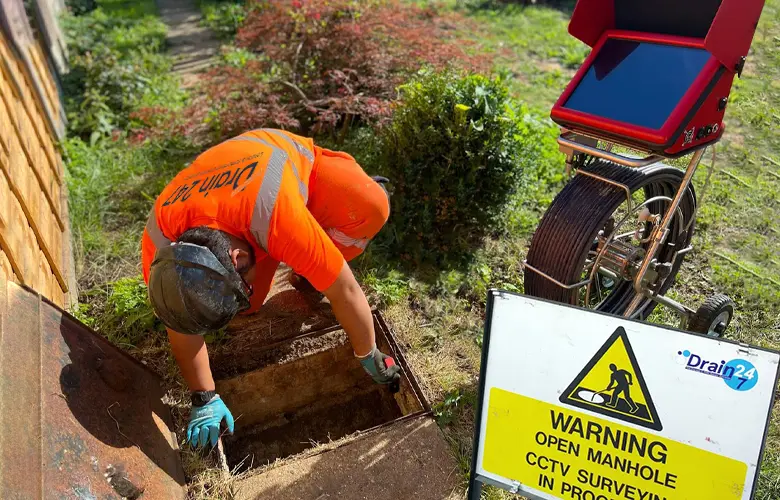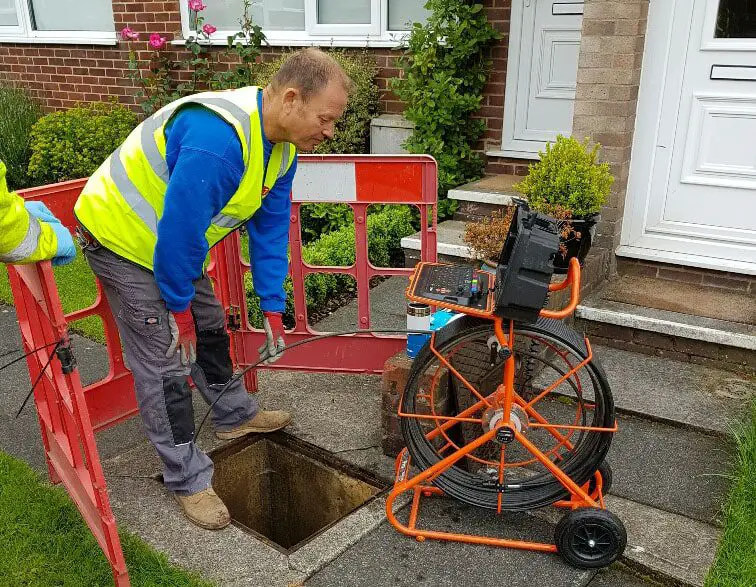Drainage mapping is a critical aspect of environmental management that involves the collection and analysis of data related to the flow and distribution of water in an area. This process plays a vital role in the identification of potential risks associated with water pollution and flood management.
Drainage is an essential component of any urban or rural infrastructure system. It refers to the process of managing and directing the flow of water, whether it is surface water, groundwater, or sewage. Effective drainage is crucial to prevent flooding, erosion, and water-borne diseases, and it also plays a vital role in maintaining the health and safety of communities.
There are several types of drainage systems, each with its unique characteristics and benefits. Surface drainage involves the use of natural or constructed channels, such as ditches or canals, to direct water away from an area. This type of drainage is particularly useful in agricultural and rural areas, where excess water can damage crops or create safety hazards for livestock.
Subsurface drainage, on the other hand, involves the use of underground pipes or channels to remove excess water from an area. This type of drainage is often used in urban areas, where impermeable surfaces like roads, buildings, and pavements prevent water from naturally percolating into the ground.
Another important type of drainage is sewage or wastewater drainage. This involves the collection, treatment, and disposal of human and animal waste. Proper sewage drainage is essential for maintaining public health and preventing the spread of water-borne diseases.
Designing an effective drainage system requires careful planning and consideration of several factors, such as topography, soil type, climate, and land use. The drainage system must be able to accommodate expected levels of water flow and should be designed to prevent erosion and minimize the risk of flooding.
In conclusion, drainage is a critical element of infrastructure design and plays a vital role in maintaining public health, safety, and economic prosperity.
Effective drainage systems require careful planning, design, and implementation to ensure their success and sustainability over time. By investing in robust and resilient drainage systems, communities can protect themselves from the negative impacts of excess water and create a more livable and prosperous environment for their citizens.
Importance Of Drainage mapping In Environment

The significance of drainage mapping is highlighted in industries that deal with hazardous materials such as blast furnace fuel, where proper drainage systems can prevent contamination of water sources in case of spills. Similarly, vintage oil can spout can pose a significant threat to the environment, and drainage mapping helps to prevent the spread of pollutants in case of a leak.
How do you spell fuel? To ensure accuracy in drainage mapping, it is crucial to understand the correct spelling of relevant terms such as fuel, which is commonly misspelled as ‘faul.’ This attention to detail is essential to ensure effective communication and understanding of the collected data.
In addition to identifying potential risks, drainage mapping is useful in managing the impact of liquid fuel leak check. Through data analysis, experts can identify areas that are prone to leakage and implement measures to prevent potential disasters.
The importance of drainage mapping is not limited to industrial settings only. It is also useful in the management of natural resources such as water in large basins like the Columbia River drainage basin. Proper mapping allows experts to develop effective flood management strategies and ensure that the water resources are used sustainably.
Drainage mapping is a critical tool in environmental management. Its significance extends to both industrial and natural settings, allowing for the prevention of potential disasters and sustainable resource management. Therefore, it is essential to invest in this process to ensure the protection of the environment and its resources for future generations.
Drainage mapping involves the collection and analysis of various types of data related to the water flow, such as topography, land use, soil type, rainfall patterns, and surface and subsurface water drainage systems. This data is used to create a map that highlights the areas of the landscape where water flows, including streams, rivers, and wetlands, and identifies the potential risks to the environment and human health.
Read Also: Waste Management Services Camarillo Recycling inc. Offers
In industrial settings, proper drainage mapping is vital to prevent pollutants from entering water sources in the event of a spill or leak. For example, blast furnace fuel, which is a hazardous material used in steel manufacturing, can pose a severe threat to the environment if it leaks into water sources. With the help of drainage mapping, the areas at risk of contamination can be identified, and measures can be implemented to prevent such an occurrence.
Similarly, vintage oil can spouts, which are commonly found in old vehicles and machinery, can leak oil and contaminate the surrounding environment. With the help of drainage mapping, these areas can be identified, and remedial measures can be taken to prevent further contamination.
Proper spelling of relevant terms such as fuel is crucial in drainage mapping to ensure accurate data collection and analysis. For instance, misspelling fuel as “faul” can lead to confusion, miscommunication, and inaccurate analysis of data.
In addition to industrial settings, drainage mapping is also essential in managing natural resources such as water in large basins such as the Columbia River drainage basin. This basin covers a vast area, including parts of seven US states and Canada.
Proper mapping of this basin allows experts to monitor water flow, develop effective flood management strategies, and ensure sustainable use of water resources.
Drainage mapping is a crucial tool in environmental management. It plays a significant role in the identification and prevention of potential risks to the environment and human health. With accurate and up-to-date mapping, it is possible to manage natural resources sustainably, prevent contamination of water sources, and protect the environment for future generations.
Drainage mapping is a continuous process that requires regular updates to reflect changes in the environment and its usage. For instance, changes in land use can affect the flow of water and increase the risk of flooding or contamination. Therefore, it is essential to update drainage maps to reflect these changes and develop appropriate strategies to manage the risks.
Effective drainage mapping also requires collaboration between different stakeholders, including government agencies, industries, and local communities. This collaboration helps to identify potential risks and develop effective strategies to manage them.
For example, industries can provide information about hazardous materials and their potential impact on the environment, while local communities can provide information about water usage patterns and potential sources of contamination.
Drainage mapping is not limited to identifying potential risks. It can also be used to identify opportunities for sustainable resource management. For instance, mapping water sources and usage patterns can help identify areas where water conservation measures can be implemented, leading to more sustainable use of this critical resource.
Drainage mapping can also be used to evaluate the effectiveness of existing drainage systems and flood management strategies. Regular evaluation can identify areas that require improvement, leading to more efficient and effective management of water resources.
Drainage mapping is a vital tool in environmental management. It helps to identify potential risks, develop appropriate strategies to manage them, and evaluate the effectiveness of existing systems.
Regular updates and collaboration between stakeholders are essential for effective drainage mapping, leading to sustainable management of natural resources and protection of the environment.
One of the significant benefits of drainage mapping is that it provides valuable information for decision-making processes related to land use and development.
By identifying areas prone to flooding or contamination, drainage maps can help local authorities and developers make informed decisions about where to build or develop, and what mitigation measures to put in place.
Read Also: The Differences Between zooplankton and phytoplankton
Drainage mapping is crucial in disaster management and emergency response. During natural disasters such as floods or storms, drainage maps can be used to identify areas at risk and provide critical information for emergency responders to deploy resources effectively. In addition, drainage mapping can also help to identify areas that require urgent repair or maintenance of drainage systems, reducing the risk of further damage and potential disasters.
Another significant benefit of drainage mapping is that it can help to enhance environmental awareness and education. By providing easily accessible information about water resources and their management, drainage maps can help to increase public awareness about the importance of sustainable water management and protection of the environment. This increased awareness can lead to better environmental practices, and ultimately, a more sustainable future.
Drainage mapping can contribute to the achievement of global sustainable development goals. Sustainable Development Goal 6 (SDG 6) aims to ensure availability and sustainable management of water and sanitation for all.
Drainage mapping can play a crucial role in achieving this goal by providing critical information about water resources, their distribution, and usage patterns. This information can help to develop more efficient and effective strategies for sustainable water management.
Drainage mapping is a powerful tool in environmental management with a wide range of benefits. It provides valuable information for decision-making, disaster management, and emergency response, enhances environmental awareness and education, and contributes to the achievement of global sustainable development goals. By investing in drainage mapping, we can ensure sustainable management of water resources and protection of the environment for future generations.
One of the challenges of drainage mapping is the complexity of the data required to create accurate maps. Gathering data on water flow, land use, soil type, and rainfall patterns can be a time-consuming and costly process. In addition, the accuracy of the maps depends on the quality of the data collected. Any errors or omissions can lead to inaccurate maps and ineffective management strategies.
Another challenge is the need for continuous updates to the maps to reflect changes in the environment and its usage. This requires ongoing monitoring of the data and regular updates to the maps, which can be a resource-intensive process.
Drainage mapping requires collaboration between different stakeholders with diverse interests and priorities. Government agencies, industries, and local communities may have conflicting interests, and it can be challenging to find common ground. Effective collaboration requires open communication and a willingness to work towards shared goals.
Despite these challenges, the benefits of drainage mapping make it a valuable tool in environmental management. By providing critical information about water resources and their management, drainage maps can help to protect the environment, reduce the risk of disasters, and promote sustainable development.
The importance of drainage mapping in environmental management cannot be overstated. While there are challenges to creating accurate and up-to-date maps, the benefits of drainage mapping make it a crucial tool for protecting the environment and ensuring sustainable water management. By investing in drainage mapping and promoting collaboration between stakeholders, we can achieve our shared goals of protecting the environment and promoting sustainable development.
Read Also: Caucasian Shepherd Dogs: Description and Complete Care Guide

